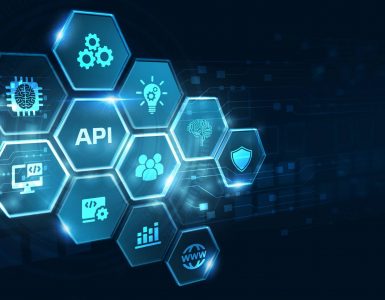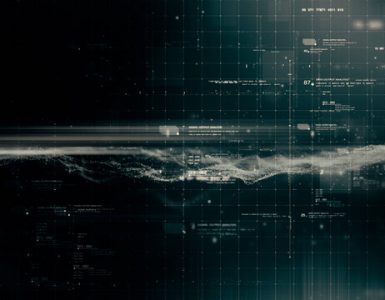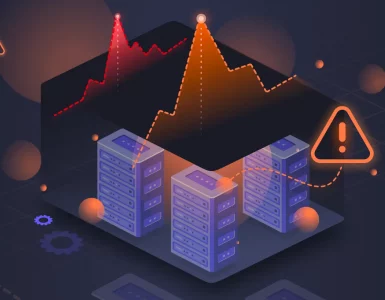With increasing tools, technologies, approaches, and a growing market size ($10,4 billion in 2023), DevOps is becoming more complicated than ever. This makes businesses and DevOps workers want better insight into their systems.
Observability and tracking are important for building awareness because their data, logs, and trails give us important information that is at the heart of implementing DevOps. Even though they sound the same, observability and tracking do different things. When used together in a planned way, they both help improve system awareness. In recent interviews, many people have been asked to explain the difference between the two, which is why Talent500 chose to write this piece.
In this article, I’ll show you how to tell the difference between the two and how to use them together to make DevOps work:
Reflecting on Observability in DevOps
Observability isn’t just an odd word; it means being able to look into a system and figure out what’s going on inside by looking at the data it sends out. Observability gives DevOps engineers useful information about complex systems throughout the software delivery journey.
So, let’s break it down:
Monitoring: It is focused on collecting data, logs, and traces to figure out how a system works. Latency, traffic, mistakes, and the use of all available tools are often important measures.
Monitoring data is put together to show how the different parts of a system work together. This means getting info from different technology levels and showing it.
Debugging: When something goes wrong, watching data can help figure out what’s wrong. The facts on how things can be seen sets the stage for understanding how problems spread.
Feedback Loops: Observability isn’t just about being able to look; it’s also about what you do. Monitoring data is put back into the development process to improve both the code and the design. A lot of tools for observability can even work well with CI/CD workflows.
The experts at Talent500 say that there are three key pieces of observability data:
- Metrics: These numbers, like how much CPU is used or how long it takes to do something, show how healthy a system is.
- Logs: Think of them as notes in a notebook. They record things like mistakes or deals, which can help you figure out what happened next.
- Traces: Imagine that a request is followed by various servers and connections. This helps figure out how distributed systems work.
Understanding what Observability is and how it works in DevOps:
Now that you know how to talk about observability in technical terms, let’s see where it fits in the broader picture:
- Swift Troubleshooting: It’s easy to find the real reasons when you have observability data.
- Monitoring SLOs: Keeping a close eye on important service level goals like steadiness and error rates.
- Better Collaboration: It ensures that developers and operations staff don’t get misaligned; instead, they share a single view of observability data.
- Being ahead of the curve: With observability analytics, problems can be found and alarms can be set off before customers feel the heat.
- Performance Tuning: This helps improve general performance by finding cache misses or queries that don’t work well.
- Strategic capacity planning: It is about having a long-term plan and figuring out what resources will be needed by looking at how they are being used now.
Taking all of this into account, it’s clear that observability is not just a nice-to-have, but a must-have for success in DevOps. Based on what you’ve read so far, it’s clear that observability practices and toolkits are likely to give you a lot of value in terms of speed, stability, and team productivity.
Monitoring: The DevOps Watchtower
Let’s now turn our attention to watching. Monitoring is based on keeping an eye on systems and apps all the time and using key data and logs to get a big picture view of their health, performance, and availability.
From a DevOps point of view, let’s look at what monitoring brings to the table:
The role of monitoring in DevOps
- Metrics are like the heartbeat of a system. They include CPU usage, memory tracks, reaction times, and mistake rates.
- Logs are the detailed records of things that happen, like mistakes, deals, or security problems.
- Dashboards make it easier to understand data and logs, and they can be made to fit the needs of different parties, such as developers, operations staff, or business users.
- Developers are made aware of a situation when set parameter limits are reached or when strange things happen.
- The tracking process is made possible by platforms and tools like Prometheus, Grafana, and ELK stack.
Different Aspects of DevOps Monitoring:
After talking about what monitoring is and how it works, it’s time to talk about how monitoring affects DevOps:
- Infrastructure Vigilance: It is about using tools like SNMP or collectd to protect computers, networks, and files, which are the core of DevOps.
- Application Performance Monitoring: Keeping an eye on important things like reaction times, traffic, and mistakes.
- Log Governance: It is the process of centralizing and figuring out what logs from apps and systems mean.
- Synthetic monitoring: It is a way to test speed and availability by simulating user trips.
- Real-time User Surveillance: Getting real feedback from how users interact with apps by measuring how they use them directly.
Why DevOps monitoring is important
Let’s talk about what monitoring in DevOps means for the business:
- Agile Incident Response: Teams can respond to degradations or downtimes more quickly when they know about them quickly.
- Performance Revelations: Make sure that bottlenecks and tuning chances are no longer hidden.
- Futuristic planning: Insights from monitoring help figure out what infrastructure is needed based on how fast a place is growing.
- Compliance: Meeting legal requirements for system monitoring.
- Post-deployment assurance: It is the process of checking to see if systems and apps live up to their claims after they’ve been released.
- Stalwart Reliability: Monitoring is an important part of Site Reliability Engineering (SRE) projects, especially for Error Budgets and SLIs/SLOs.
- Collaborative synergy: When devs and ops can see the same tracking data, they can work together to improve systems.

Taking these points into account, we can all say that monitoring isn’t just a habit; it’s the key to making sure that systems are strong, stable, and flexible. A strong tracking approach boosts the benefits of implementing DevOps by reducing disruptions and making customers happier.
Comparing observability and monitoring
With a better grasp of both ideas, it’s important to know how they are different:
- Monitoring is all about collecting and showing pre-set metrics and logs, while observability is all about using metrics, logs, and traces to get a full picture.
- Monitoring sends alerts to workers based on a set of factors, but observability goes deeper and shows where problems came from.
- Observability has a strange way of revealing insights without limits, while monitoring requires you to know ahead of time what’s worth watching.
- Monitoring is like taking a picture, while observability is like writing a story about a system.
- Metrics for monitoring are tied to certain systems. On the other hand, observability ties together data stories from different systems and units.
In plain English:
- Monitoring tells us “what” happened, or what happened.
- Observability digs into the “why” and puts things in their proper place.
- Observability and tracking work together, not against each other. When DevOps workers invest in the whole, they can enjoy the benefits of both models.
Using observability and monitoring to make DevOps work better
While the first step is to understand them, but the magic happens when they are used in DevOps. Here are some key ways to really use observability and tracking to your advantage:
- Robust Instrumentation: Give your systems the tools they need to collect data, logs, and traces. You can get help from libraries like OpenTelemetry.
- Telemetry in Production: Get real information from how production is set up.
- Visualization Is Important: Make easy-to-use tools to tell stories with data.
- Intertwine info Streams: Put together info from everywhere to get a full picture.
- Impact-based Alerts: Put customer-focused metrics ahead of just system health metrics.
- Continuous Learning: Check alerts and outages regularly to improve tactics for observability and tracking.
- Vendor vs. Open-Source: Think about the pros and cons of each and choose your tools wisely.
- Iterative Mastery: It takes time to get better, so make small changes over time.
Wrap Up
Observability and tracking are the torchbearers for the DevOps worker. They show the way to robustness, speed, and new ideas. By adopting these concepts, we usher in an era where DevOps isn’t just about pushing code but also about making sure that the software is excellent at every touchpoint.
Want a better job in DevOps? Sign up for Talent500 now!






Add comment